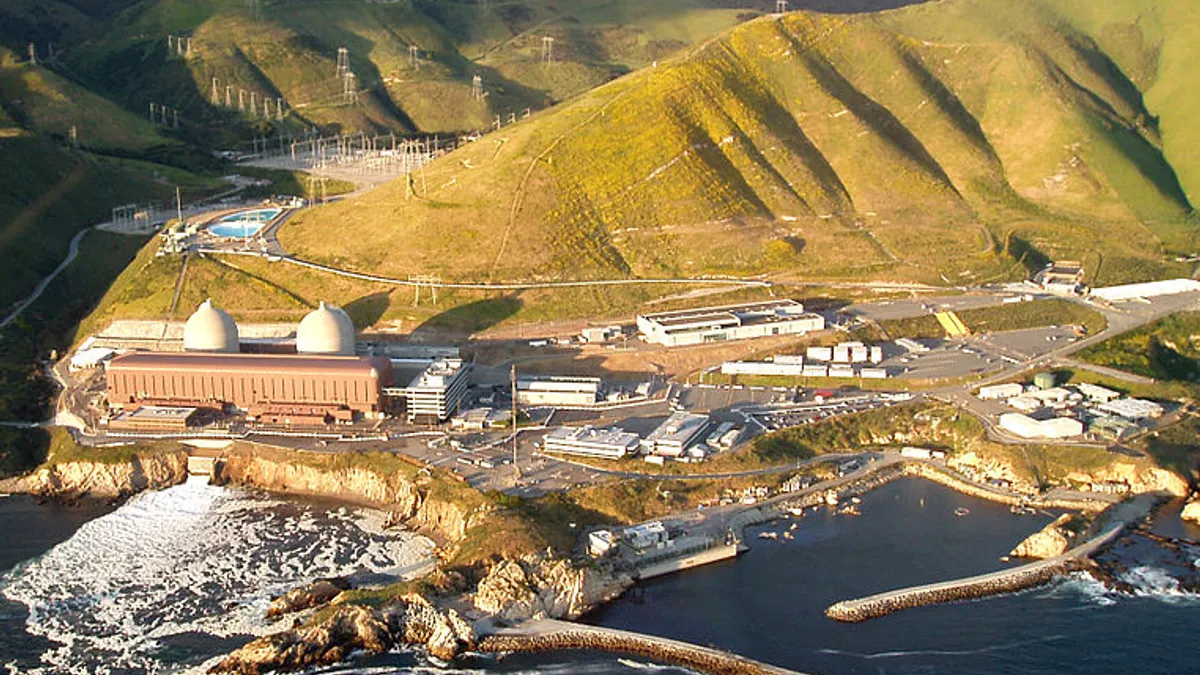Dive Brief:
- A nuclear watchdog group has obtained emails from Pacific Gas & Electric which they say show the utility had significant doubts about the ability of its Diablo Canyon nuclear plant to safely withstand a sizable earthquake.
- In a report submitted last year to state and federal regulators, PG&E concluded the plant "remains seismically safe and able to withstand the largest potential earthquakes in the region."
- But according to The Alliance For Nuclear Responsibility, internal emails show doubt about the report and how it would be communicated, including one calling the report a potential "blight" on the company.
Dive Insight:
Diablo Canyon is the last nuclear facility operating in California, and a watchdog group says it may not be as safe as owner PG&E would like the public to believe.
"These reports are in bad shape and will be a blight on PG&E if they go out as is," reads one email among about 2,400 obtained by The Alliance For Nuclear Responsibility.
PG&E completed a report — the California Central Coast Seismic Imaging Project — at the direction of state legislators, as well as the Nuclear Regulatory Commission, to show the facility was safe from seismic activity. In September of last year the utility issued a statement saying Diablo Canyon could withstand the largest possible earthquake in the region.
"This research effort, utilizing the latest technologies, demonstrates Diablo Canyon continues to be seismically safe," Ed Halpin, senior vice president and chief nuclear officer at PG&E, said in a statement at the time. "These studies provide scientists and regulators an unprecedented scientific analysis of the seismic characteristics near Diablo Canyon."
But Halpin, in an email leading up to the report's publication, sounded less sure: "It seems the majority of the data has worsened and not improved," he wrote. "The optics look bad. If I was to color code the summary sheet and show all data in red that’s worse in regard to assumptions, it would not look good."
The utility issued a statement to New Times, saying the emails reflect scientific rigor rather than any attempt to deceive. "PG&E’s commitment was to provide an accurate and detailed analysis of the advanced seismic studies for regulators, scientists, and the public," it said.
Specifically to Halpin's email, the utility said: "The primary job of a chief nuclear officer is public safety. Ed Halpin was doing his job by challenging his team to explain how they concluded we were safer when optically, i.e. the summary page he was examining, showed some parameters worsening instead of improving. The answer, as he alluded to, was in the significance weighting of each parameter.”















